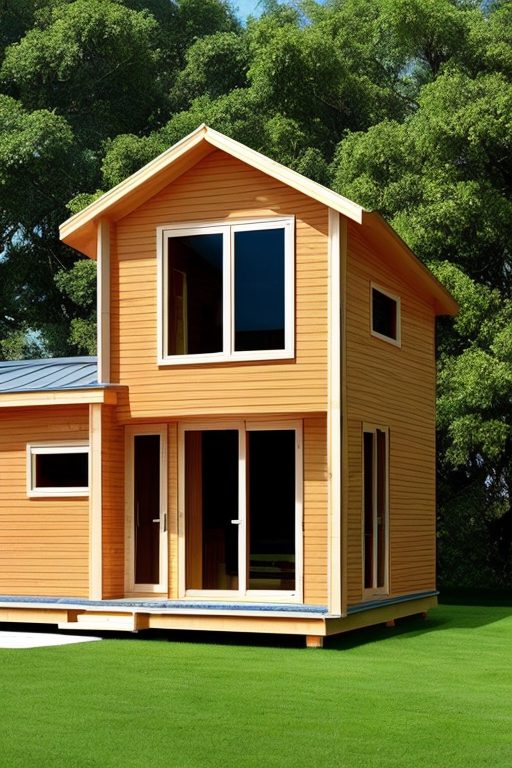https://www.bbc.co.uk/ideas/videos/the-22nd-century-people-living-among-us/p0f7sx0n?playlist=what-will-the-future-be-like
Please share my lesson using your social media platforms. Use the links above.
Student FREE Bookstore (CLICK HERE)
“PLYSCRAPERS” Are wooden houses and buildings the answer to climate change?
Constructed in 607AD in Nara, Japan, the Horyu-ji Temple holds the title of the world’s oldest surviving wooden building. Standing impressively at five storeys high, its sturdy structure has withstood the test of time despite being built from cypress trees that were felled over a staggering 1,400 years ago. Horyu’s impressive longevity conveys a vital message for future architectures: building with timber can not only be long-lasting, aesthetically pleasing, and pragmatic but can also contribute significantly to combating climate change. Allow us to expound on this notion.
Now Discuss the New Vocabulary:
Grammar Section:
If we were to construct 90% of our new buildings using wood instead of concrete and steel, global carbon emissions could be reduced by an astonishing 4%. This figure exceeds the total climate footprint of air travel. But how exactly does building with wood confer such benefits? Firstly, as trees grow, they absorb carbon dioxide from the atmosphere. This carbon dioxide is then stored within the beams and panels used in constructing buildings – a process aptly known as carbon capture. Consequently, the timber found in Horyu Temple has preserved CO2 absorbed from the planet’s atmosphere during the 7th Century.
Now Discuss the New Vocabulary:
Grammar Section:
Naturally, utilizing wood as a construction material requires felling trees; however, as long as ancient forests are protected and efforts are made to sustain wildlife habitats and replant trees, woody resources can be considered sustainable for long-term use. Over the past 15 years, total forest coverage in the northern hemisphere has increased by roughly 242,000 square kilometers – an area equivalent in size to the United Kingdom. Indeed, every seven seconds, Europe’s sustainable woodlands produce enough timber to construct a family home for four people. Europe is not alone in this endeavor; Canada can harvest an adequate amount of trees annually to house approximately one billion people.
Now Discuss the New Vocabulary:
Grammar Section:
Another vital aspect contributing to carbon reduction is choosing natural materials for construction, which requires considerably less concrete and steel. Both of these materials pose significant challenges to the climate. Steel-making is responsible for about 8% of total global CO2 emissions, while cement production accounts for another 6%. Although not all of these materials are used in constructing buildings, they still comprise a substantial consumer segment.
Now Discuss the New Vocabulary:
Grammar Section:
The combination of stored carbon and averted emissions makes timber the superior choice for curbing climate change. Recent innovations have improved wood’s user-friendliness even further. Cross-laminated timber (CLT) is produced by layering conifer planks at 90-degree angles to each other in three to seven tiers before being glued together, resulting in a robust plywood-like material. These panels can be employed for walls, floors, roofs, and even lift shafts – boasting strength-to-weight ratios frequently better than concrete. CLT can be incorporated into schools, offices, warehouses, and even taller buildings dubbed “plyscrapers”, with 85-meter structures recently completed in Austria and Norway.
Now Discuss the New Vocabulary:
Grammar Section:
However, wooden buildings remain uncommon due to the conservative nature of mainstream construction. The industry’s risk-averse attitude makes change difficult without bold intervention measures. In some cases, policy implementation offers a solution – as demonstrated by the French government’s mandate that at least 50% of each new public building must be constructed from wood. This not only helps store greater amounts of carbon but also inspires the next generation of builders to acquire expertise in environmentally friendly timber construction.
Now Discuss the New Vocabulary:
Grammar Section:
Safety concerns surrounding wooden buildings are often brought up due to historical events like the Great Fire that destroyed London’s medieval center in 1666. However, modern tests have shown that when subjected to fire, CLT panels often form a protective charcoal layer shielding the core. Combined with heat-resistant glues and claddings, wooden structures can match or surpass commonly used materials today.
Now Discuss the New Vocabulary:
Grammar Section:



